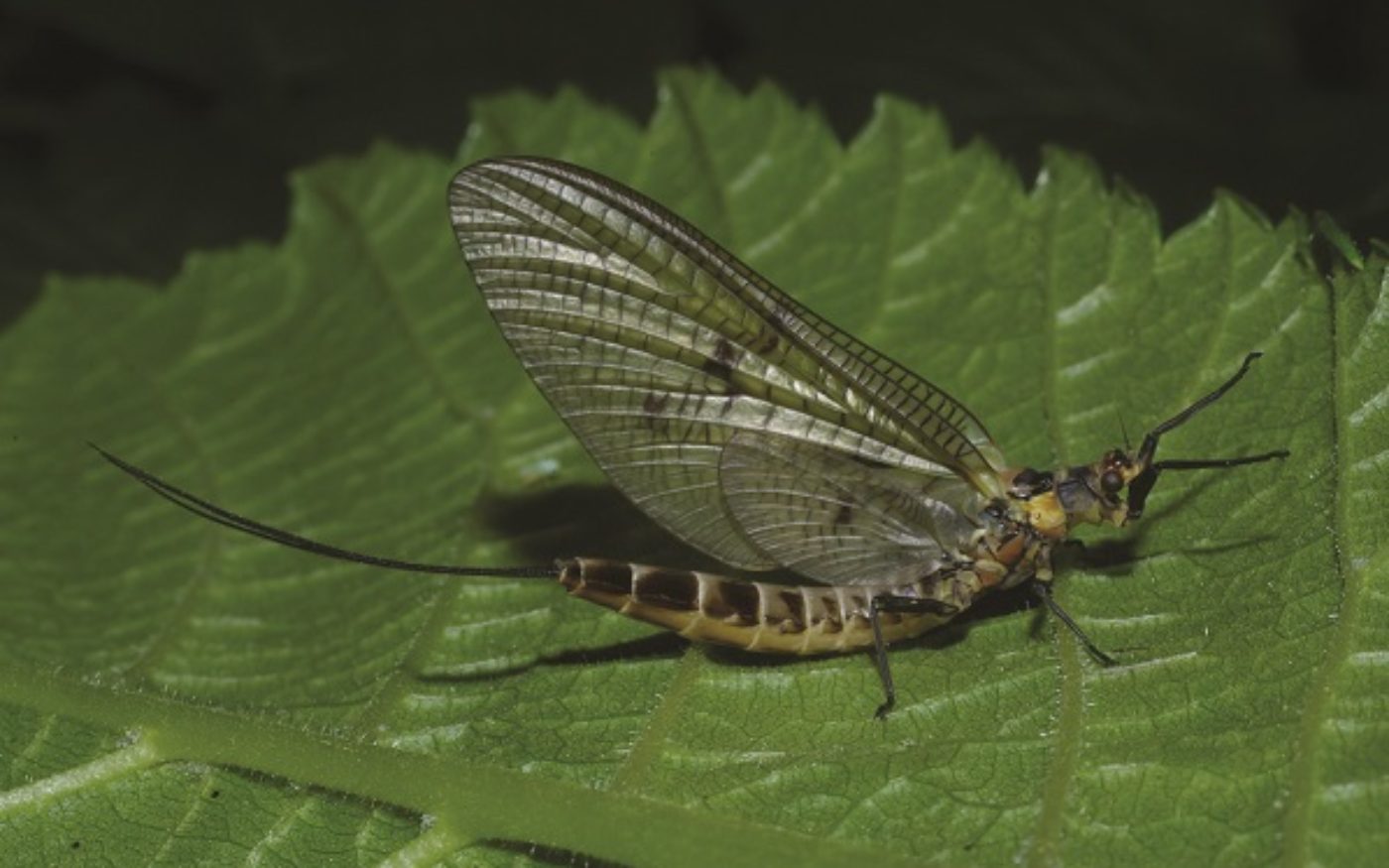Order
Mayflies or upwing flies
Mayflies are the most primitive winged insects. Nymphs live in freshwater and species show adaptations to their particular niche, in open water they are cylindrical shaped with long thin legs, under stones they are flat and stout with outstretched legs, burrowing nymphs have strong legs and tusk-like mandibles. Adult mayflies live ‘ephemerally’ for a short time and often emerge together, to form mating swarms in trees near freshwater. In Britain there are over 50 different species of Mayfly, the Green Drake is a common species.
What do they look like?
Adult Green Drake Mayflies have cream grey abdomens with a dark rear, two or three tails and translucent spotted wings with complex dark venation. Females are grey and 16 to 25mm in length; males are darker and smaller at 15 to 20 mm in length and have elongated forelegs to hold females when mating. Nymphs can grow up to 30mm, they have three tails, gills on the sides of their abdomen, and are adapted for burrowing with strong legs and tusk-like mandibles. On first emerging, adults are a dull green colour, before moulting into full adult mayflies.
Where do they live?
Green Drake Mayfly nymphs live in lakes and rivers with muddy or sandy bottoms. Adults fly nearby the water from which they emerged.
Where can they be found?
The Green Drake Mayfly is common around Britain in suitable habitats.
When can you see them?
Adults fly between April and September. Nymphs are in freshwater for most of the year.
Life cycle
Adult Green Drake Mayflies emerge between April and September, with local populations emerging together. New adults are a dull green colour and undergo another moult as an adult, a process unique to mayflies, before becoming mature 'spinners' with translucent wings and dark veins. Adults do not fly far and form mating swarms near to water, females then lay fertilised eggs in the water by dipping their abdomen onto the surface. Eggs hatch into nymphs and undergo up to 50 moults over two years, before emerging as adults. In warmer areas of Southern Britain the Green Drake Mayfly has a shorter lifecycle, with nymphs developing for only one year in water.
What do they do?
Nymph Green Drake Mayflies dig tubular burrows, through which they filter organic matter for feeding. Nymphs and adults are important food for freshwater invertebrates such as fish and birds.
Did you know?
The Green Drake Mayfly female can lay up to 8,000 eggs in her lifetime!

